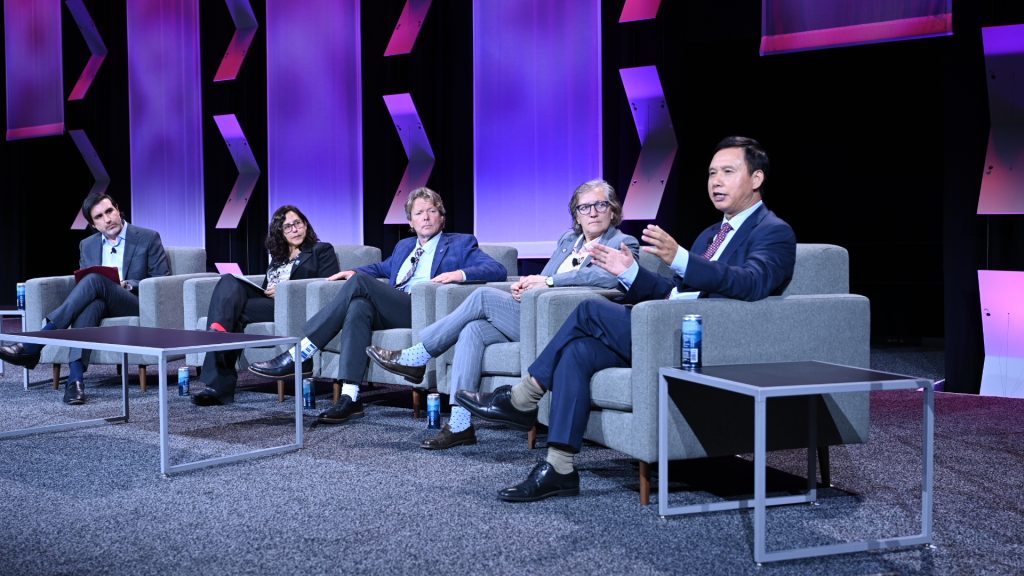Strength In Numbers: Transit Agencies Work Together to Protect Funding, Advance Improvements
7/7/2025

Cooperation is driving the successes of California transportation providers. Development partnerships are interconnecting cities and systems, and joint advocacy is helping agencies to pilot innovations in safety, efficiency, and operations. Showcasing these wins, the Golden State Transit session at the 2025 APTA Rail Conference July 1 featured a Northern California panel.
Moderator Michael Pimentel, California Transit Association executive director, invited agency representatives to discuss their work to preserve funding, build support for transit, and improve the rider experience.
Robert Powers, general manager of co-host San Francisco Bay Area Rapid Transit District (BART), said it really helped the case for transit funding now that the agencies were “speaking together with one voice… We are all going (to the legislature) with the same message, so it doesn’t matter if I’m going, or Muni, or Caltrain… I think now we’ve got it together and we do a good job.”
Michelle Bouchard, CEO, Caltrain, added that agencies should convey a tangible message in that unified voice, “This is how we will make lives better for our riders and for the communities in which we operate.”
Caltrain’s transition to all-electric trains, completed last year, enables Bouchard talk about Peninsula children not growing up around the noise and fumes of diesel trains, along with the economic benefits of transit.
Unified lobbying allows agencies to use technology, specifically forward-facing vehicle cameras, to improve operations and, for Sacramento Regional Transit District, earn revenue. Henry Li, general manager and CEO, described the safety and operations problems of cars parked at bus stops, and the solution: a camera-based AI system that identified 11,000 violations and took in approximately $1 million in fines in two months.
“We’re not really looking for revenue. We want to change the societal behavior,” Li said. For now, though, “Our riders can better, more safely access… our buses and bus stops, and also for ADA passengers, it’s helping them tremendously to board our buses.”
Michael Pimentel then asked panelists about their work on a state directive to develop rider-centric improvements, such as unified wayfinding, integrated scheduling, and safety improvements.
Julie Kirschbaum, director of transportation of co-host San Francisco Municipal Transportation Agency (Muni), discussed safety through prevention. More lighting, staff presence, and frequent cleaning are paired with prominent security cameras in Muni facilities.
“We have 11 high-quality cameras on every vehicle. I can say with some confidence that if you commit a crime on duty, you will be caught,” Kirschbaum said. “But we also talk a lot about those cameras because our intent is to prevent crimes, not just to prosecute crimes.”
View more images from the Rail Conference here.